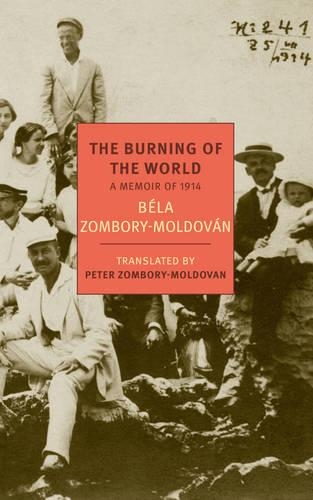
The Burning Of The World
(Paperback, Main)
Publishing Details
The Burning Of The World
By (Author) Bela Zombory-Moldovan
By (author) Bla Zombory-Moldovn
By (author) Peter Zombory-Moldovan
New York Review Books
NYRB Classics
15th August 2014
5th August 2014
Main
United States
Classifications
General
Non Fiction
First World War
940.3092
Physical Properties
Paperback
184
Width 80mm, Height 120mm, Spine 10mm
180g
Description
Publishing during the 100th Anniversary of the First World War An NYRB Classics Original The budding young Hungarian artist Bela Zombory-Moldovan was on holiday when the First World War broke out in July 1914. Called up by the army, he soon found himself hundreds of miles away, advancing on Russian lines-or perhaps on his own lines-and facing relentless rifle and artillery fire. Badly wounded, he returned to normal life, which now struck him as unspeakably strange. He had witnessed, he realized, the end of a way of life, of a whole world. Recently discovered among private papers and published here for the first time in any language, this extraordinary reminiscence is a deeply moving addition to the literature of the terrible war that defined the shape of the twentieth century.
Reviews
The literary discovery of the year. -- Irish Times a hidden gem The Oldie A remarkable narrative, a real treasure, a book everyone should read. The Burning of the World is a work of superb reportage as well as being a non-fiction companion volume to Joseph Roth's classic The Radetzky March ... The Burning of the World is a marvellous discovery with a humility and a sense of wonder that places it at more than the equal of even Robert Graves' Good-bye to All That. -- Eileen Battersby Irish Times The strength of this book is not as an account of combat - though the few pages devoted to the subject are brilliant - but to the effect of war on one sensitive young man and on everything and everybody. Charles Moore, Daily Telegraph To a certain extent, World War I memoirs written from the ant's perspective resemble one another, all mud and horror. What makes this one stand out is the author's painterly eye for detail, his ability to evoke a vanished way of life, and his tone of voice-gentle and civilized but perfectly capable of the occasional sardonic flash. Henrik Bering, The Wall Street Journal "written with a painter's eye for colour ... [it] matters not only for its literary qualities but also for its evocation of the Austro-Russian theatre (for which we have very few accounts) during the more mobile opening phase of campaigning, when casualty rates were among the highest in the war ... [a] story not only of madness and massacre but also of regeneration." -- David Stevenson Financial Times The writing detailing the author's experiences in battle has an energy and sense of urgency, and the whole book is filled with the understanding that life would never be the same again...recommended for anyone interested in World War I, war memoirs, and the history of eastern Europe. Library Journal ...haunting, heartbreaking, and beautifully written...[Zombory-Moldovan's] relatively short exposure to combat is conveyed with an unforgettable intensity. But this is not another chronicle of trench warfare...This is a deeply moving account of a young man's short but terrible plunge into an inferno. Booklist, starred review To be in a war, within it, to know what that means, to understand the appalling and dreadful significance of all that is appaling and dreadful-such was the fate of this gentle Hungarian painter, who, with several million companions, became entangled in the First World War and was never able to free himself from its memories. He tried to do so, nonetheless; he tried to free himself from these memories--this volume is the proof of that. This is perilous reading: the reader is invited, along with the writer, the one who remembers, to take part in what happened. But this is what we must do: from sympathy, from compassion, so that the one who truly lived through all of this will not be so utterly, unbearably alone -- Laszlo Krasznahorkai One reads with never-ending curiosity and ever deeper emotions the recollections of a compassionate artist of the first year of World War I on the nearly forgotten Eastern front. Unlike in the West, here there were few trenches; instead, there was constant movement within which vast armies of ill-equipped and ill-trained Russians, Cossacks, Caucasians, Asians, Austro-Germans, Reich Germans, Hungarians, Romanians, Poles, Czechs, Slovaks, Croats, Serbs, Slovenes, and innumerable other nationalities massacred each other for causes that many, if not most participants were unable to understand. -- Istvan Deak, Columbia University
Author Bio
Bela Zombory-Moldovan (1885-1967) was born in Munkacs, in what was then the Austro-Hungarian Empire. Wounded in action in 1914 as a junior officer on the eastern front, he served the rest of WWI in non-combatant duties. He was a successful painter during the interwar years, and was the principal of the Budapest School of Applied Arts from 1935 until his dismissal by the Communist regime in 1946. Peter Zombory-Moldovan has co-translated Arthur Schnitzler's Reigen and is a grandson of Bela Zombory-Moldovan. He lives in London.
